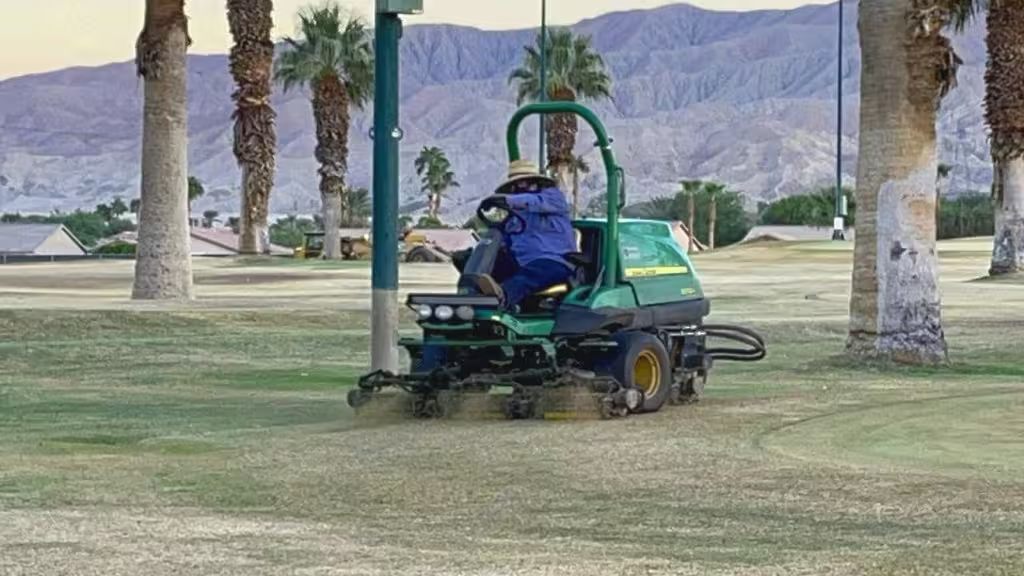PALM DESERT, Calif. — Like most residents of the Coachella Valley, Nick Leitner is amazed by the weather in the Coachella Valley the last few weeks.
“These temperatures have just been insane to the point where I’ve been here close to seven years now and I’ve never seen Oct. 1 at 115 degrees,” said Leitner, directory of agronomy at the 36-hole Indian Wells Golf Resort.
Leitner’s interest in the unseasonable heat is different than most people in the desert who are complaining about temperatures over 110 degrees in October. With October the traditional month for overseeding golf courses and other landscaping in the Coachella Valley, Leitner’s concern is getting cool-weather rye grass to germinate and stay alive in the high temperatures.
“It’s just taking as many precautions as we can. The use of fungicides and phosphite to be able to combat for disease because when you have water and heat, diseases are really present, and it can go and wipe out that cool weather grass in a matter of minutes,” Leitner said.
What is overseeding?
Overseeding is the process of transitioning from warm-weather grasses like Bermuda grass to cool-weather grasses like rye or bluegrass. Bermuda turns dormant and brown in the winter temperatures in the desert, but the triple-digit heat of the summer kills the cool-weather grasses. To keep courses green, they must overseed in the fall. In the spring, the rye grass dies off naturally and the perennial Bermuda springs back to life.
October is the transition month because temperatures, particularly at nighttime, make it possible for rye grass to germinate. At the Indian Wells Golf Resort, with two courses, Leitner and his crew have already overseeded the Celebrity Course, but the heat has caused concern about how effective the overseed will be.
“I’ve already got germination out there, which is fantastic. Now it’s just trying to move ahead,” Leitner said. “The ideal nighttime temperatures that I am looking for are between 65 and 70 degrees. That is ideal. So we have germination, now it’s just trying to manage it to the point where the rye grass doesn’t start melting out because of how hot it is or that the Bermuda grass doesn’t take it over.”
Those nighttime temperatures haven’t been seen in the Coachella Valley this fall.
“Dating back to the 21st of September, the Palm Springs area has not had a low below 70,” said Kyle Wheeler, a meteorologist with the National Weather Service in San Diego….
..
Click Here to Read the Full Original Article at Golfweek…
